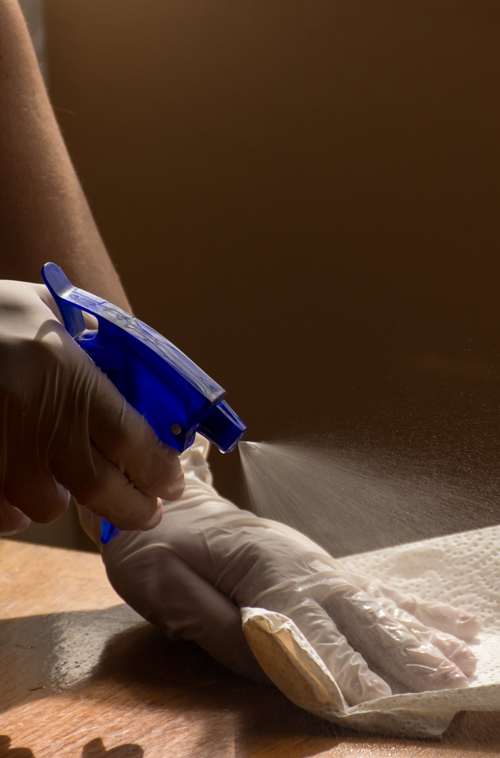China’s disinfection product industry operates within a stringent regulatory framework designed to ensure public health and safety. For foreign manufacturers looking to enter this market, understanding and complying with these regulations is crucial for successful market access and long-term operations. This article provides a comprehensive overview of the compliance guidelines for disinfection product manufacturers in China, covering everything from pre-market requirements to post-market responsibilities.
For a broader understanding of China’s regulatory framework for disinfection products, please refer to our companion article on “China’s Regulatory Framework for Disinfection Products”.
Pre-Market Requirements
Manufacturer Licensing
To operate in China, disinfection product manufacturers must obtain a Health License from provincial health authorities. This process involves:
- Submitting an application to the provincial health and family planning administrative department.
- Meeting facility requirements, including appropriate production areas, equipment, and quality control systems.
- Ensuring personnel qualifications, particularly for technical and quality control staff.
The Health License is valid for four years and must be renewed before expiration.
Product Registration
New disinfection products must undergo a rigorous approval process:
- For products using new materials, technologies, or sterilization principles, a Product Hygiene License from the National Health and Family Planning Commission is required.
- Existing products must complete a health and safety evaluation before market entry.
The evaluation report should include product labels, instructions, inspection reports, and enterprise standards. Class I product evaluations are valid for four years, while Class II evaluations have no expiration.
Product Development and Testing
Manufacturers must adhere to strict standards in product development:
- Raw materials must be selected based on safety and efficacy criteria outlined in the “Regulations on Hygiene and Safety Evaluation of Disinfection Products” (Guowei Supervision 2014 No. 36).
- Efficacy testing should be conducted according to the “Technical Specifications for Disinfection” issued by the Ministry of Health.
- Toxicological assessments must be performed to ensure product safety for intended use.
Manufacturing Standards
Adherence to Good Manufacturing Practices (GMP) is essential:
- Production environments must meet cleanliness standards specified in the “Administrative Measures on Disinfection” (Order No.27 of the Ministry of Health, 2002, revised 2017).
- Equipment specifications should align with product requirements and ensure consistent quality.
- Quality management systems must be implemented to oversee all aspects of production.
Labeling and Packaging Compliance
Accurate labeling is crucial for regulatory compliance:
- Labels must include product name, license numbers, manufacturer details, and active ingredients.
- All information must be in Chinese, with any foreign text complying with national laws and standards.
- Claims regarding microbial killing categories must align with the “Technical Specifications for Disinfection” and be supported by official inspection reports.
Prohibited claims include unsubstantiated therapeutic effects or exaggerated efficacy statements.
Quality Assurance and Control
Manufacturers must implement robust quality control measures:
- Establish in-house testing protocols for raw materials, in-process products, and finished goods.
- Define clear batch release criteria based on product specifications and regulatory requirements.
- Maintain comprehensive records of production, testing, and distribution for traceability.
Post-Market Responsibilities
Ongoing vigilance is required after product launch:
- Establish a system for adverse event reporting and investigation.
- Develop procedures for product recalls and corrective actions when necessary.
- Conduct ongoing stability testing to ensure product quality throughout its shelf life.
Regulatory Inspections
Manufacturers should be prepared for regulatory inspections:
- Maintain up-to-date documentation and records.
- Train staff on inspection procedures and regulatory requirements.
- Develop a protocol for addressing non-conformities and implementing corrective actions.
Import and Export Considerations
Special considerations apply to cross-border trade:
- Imported disinfection products must comply with all Chinese regulations and may require additional testing or certification.
- Exporters should be aware of the requirements for export certificates and any specific regulations in target markets.
Staying Compliant in a Changing Regulatory Landscape
To maintain compliance, manufacturers should:
- Regularly monitor updates from the National Health and Family Planning Commission and other relevant authorities.
- Engage with industry associations for insights and support.
- Invest in continuous training and education for staff to ensure ongoing compliance.
Conclusion
Navigating China’s regulatory landscape for disinfection products requires diligence, expertise, and a commitment to ongoing compliance. By following these guidelines and staying informed of regulatory changes, manufacturers can position themselves for long-term success in the Chinese market. Developing relationships with local regulatory professionals who can effectively manage dialogues with Chinese authorities is crucial for foreign manufacturers aiming to establish and maintain a strong presence in this dynamic market. Ensure your compliance strategy is up-to-date – schedule a consultation with our China regulatory experts today.
